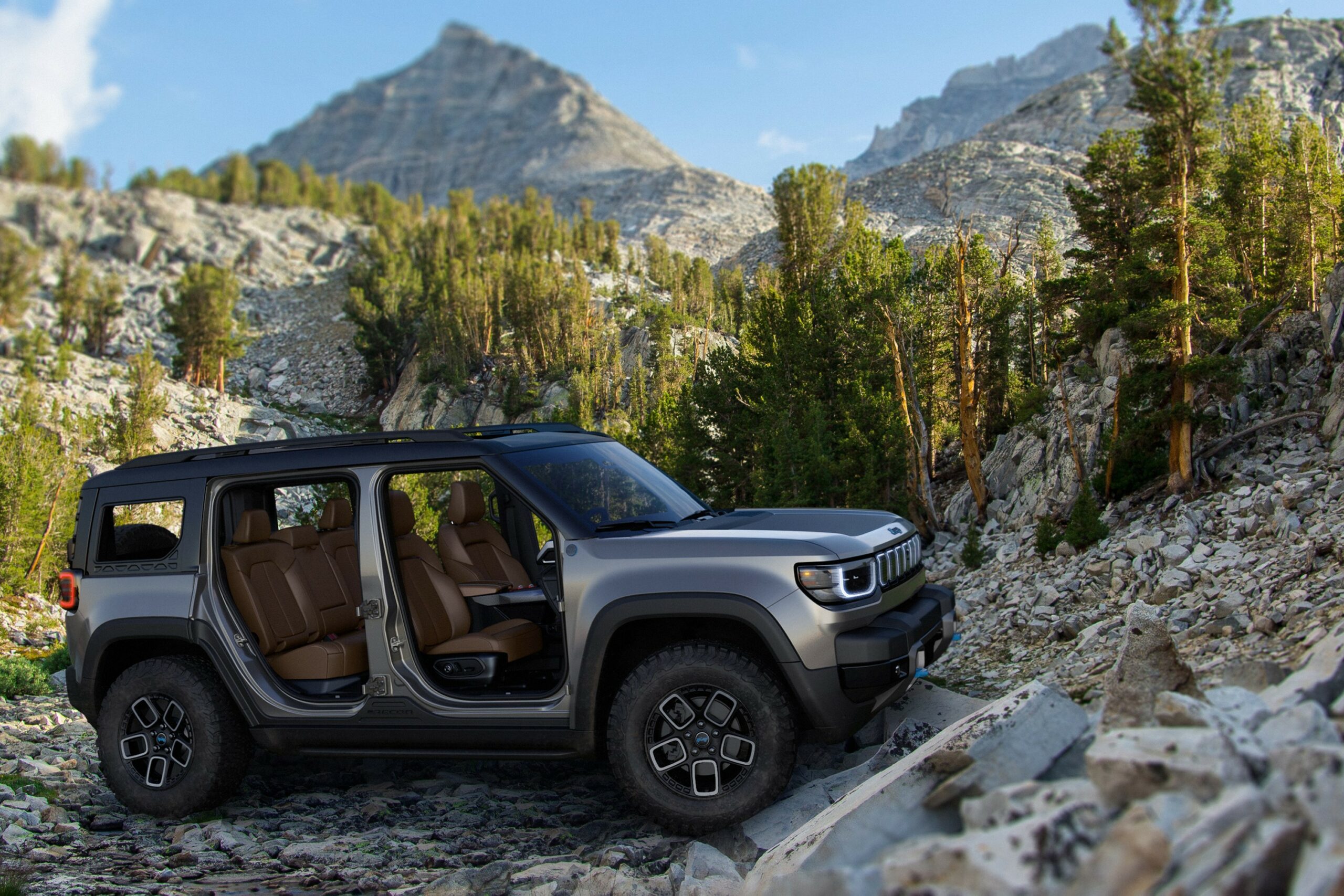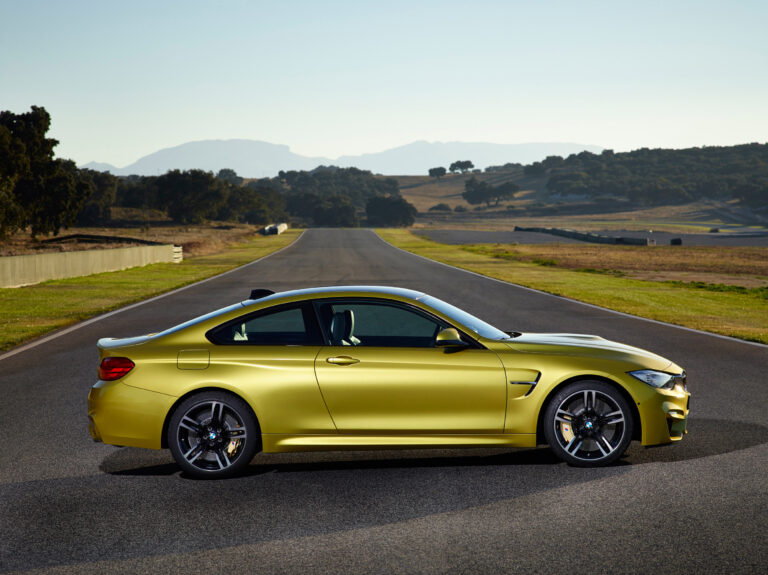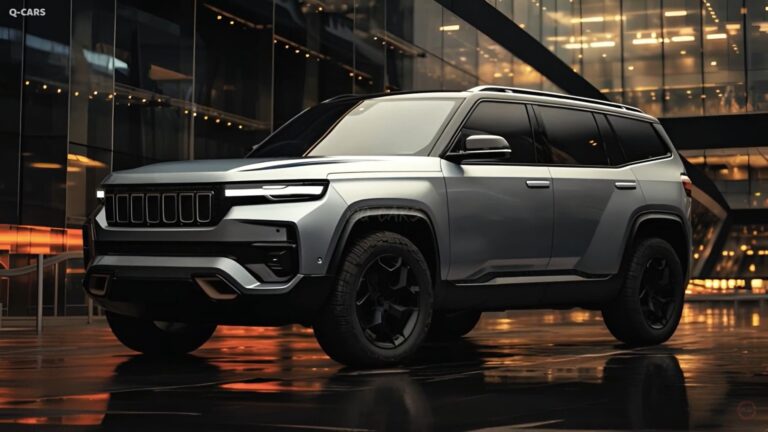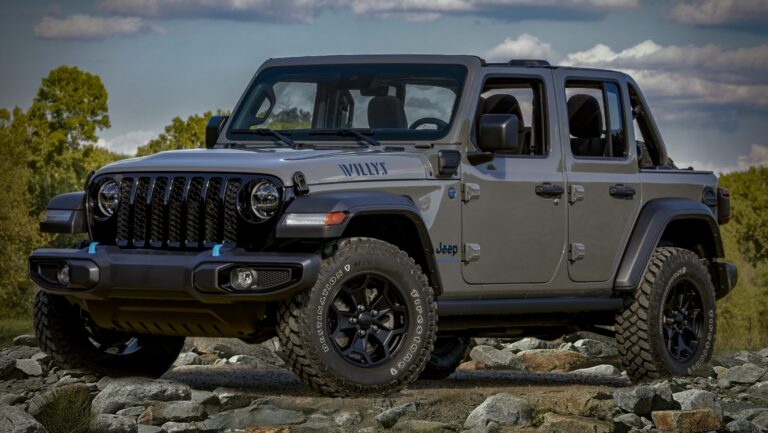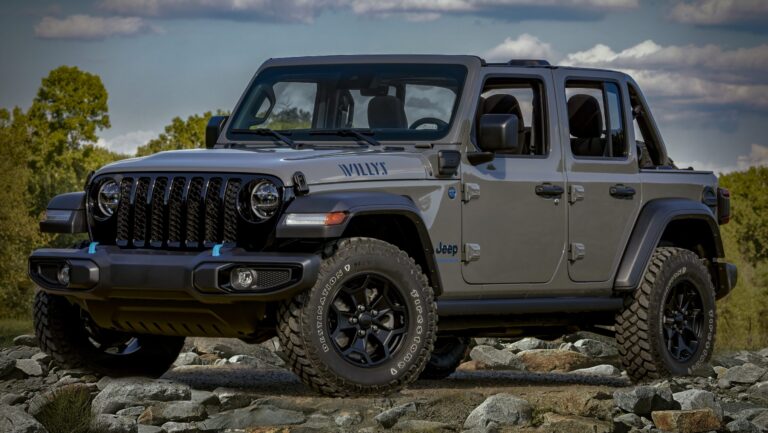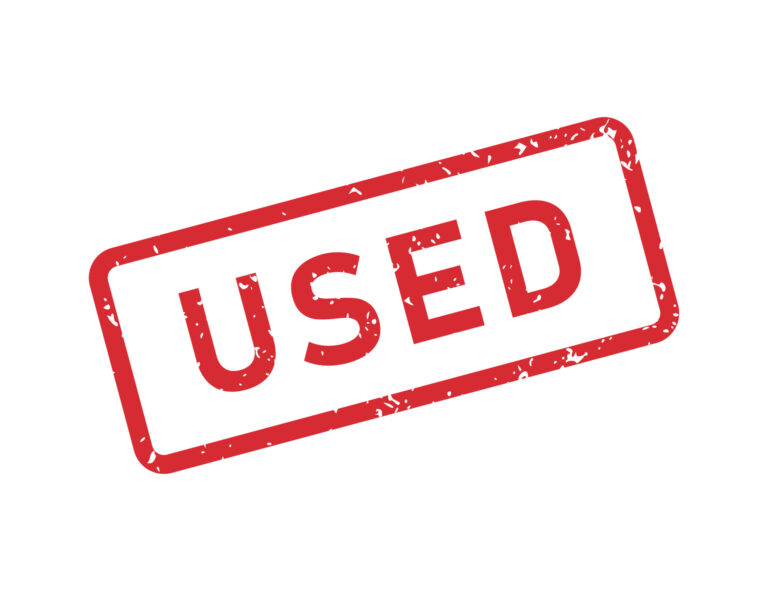Jeep TJ Chassis For Sale: Your Blueprint for a Legendary Build
Jeep TJ Chassis For Sale: Your Blueprint for a Legendary Build jeeps.truckstrend.com
The Jeep Wrangler TJ (1997-2006) holds a special place in the hearts of off-road enthusiasts and automotive purists alike. Often lauded as the "last of the true Jeeps" due to its coil-sprung suspension offering a balance of on-road comfort and unparalleled off-road articulation, the TJ remains a highly sought-after platform. However, like many vehicles of its vintage, the TJ is susceptible to the relentless march of time and, more specifically, the pervasive grip of rust. This is where the concept of "Jeep TJ Chassis For Sale" becomes not just a search query, but a pivotal starting point for numerous restoration projects, custom builds, or even the resurrection of a beloved but structurally compromised rig.
Purchasing a standalone TJ chassis offers a unique opportunity: a blank canvas or a vital replacement part that can breathe new life into a worn-out vehicle. Whether you’re an experienced fabricator planning an extreme rock crawler, a dedicated restorer aiming for a factory-fresh look, or simply someone looking to save a rusty but otherwise sound TJ, understanding the nuances of buying a chassis is paramount. This comprehensive guide will navigate the terrain of acquiring a Jeep TJ chassis, providing insights, advice, and practical information to help you make an informed decision.
Jeep TJ Chassis For Sale: Your Blueprint for a Legendary Build
Why Buy a Jeep TJ Chassis? Understanding the Appeal
The decision to purchase a bare Jeep TJ chassis, or even a rolling chassis, stems from several common scenarios, each highlighting the immense value such a component offers:
- Rust Remediation: This is arguably the most common reason. TJ frames, particularly in areas exposed to road salt or high humidity, are notorious for severe rust, especially around the skid plate mounts, control arm mounts, and rear crossmember. When the rust is too extensive for repairs, a frame swap becomes the most viable and safest solution.
- Custom Builds and Fabrication: For serious off-roaders, a bare chassis provides the ideal foundation for a custom build. This allows for modifications like stretching the wheelbase, reinforcing critical points, adding custom suspension mounting points, or even designing a completely unique drivetrain setup without having to strip down an entire vehicle.
- Accident Repair: If a TJ has been involved in an accident that bent or compromised the structural integrity of its frame, replacing the chassis is often more cost-effective and safer than attempting extensive repairs.
- Starting from Scratch: Some enthusiasts prefer to build a Jeep from the ground up, sourcing each component individually. A chassis provides the core structure to begin this ambitious project, often resulting in a vehicle tailored precisely to their specifications.
- Cost-Effectiveness (Sometimes): While not always cheaper than buying a complete vehicle, a chassis can be a strategic purchase. If you have a TJ with a perfectly good body, engine, transmission, and axles but a fatally rusted frame, buying a new or good used chassis is significantly less expensive than buying another complete TJ and swapping all the good parts over.

Types of Jeep TJ Chassis Available on the Market
The market for TJ chassis isn’t monolithic; various types and conditions exist, each with its own set of pros and cons:
- Used/Salvaged Chassis: These are frames pulled from donor vehicles, often wrecked or parted-out TJs.
- Pros: Most affordable option; readily available.
- Cons: High risk of rust, hidden damage, or previous repairs; history is often unknown. Requires thorough inspection.
- Refurbished/Repaired Chassis: These are used frames that have undergone a restoration process, which may include sandblasting, rust treatment, welding repairs, and painting.
- Pros: Better condition than raw used frames; often visually appealing; repairs may be documented.
- Cons: Higher cost than raw used frames; quality of repair can vary greatly; still an older frame.
- New/Aftermarket Replacement Chassis: Several companies manufacture brand-new replacement frames for the TJ. These are typically fabricated from heavier gauge steel or feature improved designs.
- Pros: Pristine condition, no rust, often stronger than OEM; a true "blank slate."
- Cons: Highest cost by a significant margin; may require minor modifications for OEM component fitment; limited manufacturers.
- Bare Chassis vs. Rolling Chassis:
- A bare chassis is just the frame rails, crossmembers, and body mounts. You’ll need to transfer or buy all suspension, steering, and drivetrain components.
- A rolling chassis includes the frame, axles, suspension (springs, shocks, control arms), and steering components. This is more expensive but significantly reduces the amount of work required for assembly.
Key Considerations When Purchasing a TJ Chassis
Navigating the market for a TJ chassis requires careful attention to detail. Skipping these crucial inspection steps could lead to significant headaches and unexpected costs down the line.
- Rust Inspection is Paramount: This cannot be stressed enough. Bring a flashlight, a small hammer (for tapping), and even a screwdriver.
- Common Rust Zones: Pay close attention to the frame rails, especially where the skid plate bolts on, the lower control arm mounts, the spring perches, the body mounts (particularly those under the doors and at the rear), and the rear crossmember.
- Inspection Technique: Tap suspicious areas with a hammer; a solid ring indicates good metal, while a dull thud or a crunch suggests rot. Poke at flaking rust with a screwdriver to gauge its depth. Don’t be fooled by fresh paint; it can hide serious issues.
- Straightness and Damage Assessment: Look for any signs of accident damage or bending.
- Visual Cues: Check for ripples in the frame rails, uneven gaps, or suspicious welds that don’t look factory.
- Measurement: If possible, take measurements of critical points (e.g., control arm mount to control arm mount, diagonal measurements) to ensure the frame is square. A bent frame can lead to severe alignment issues and poor handling.
- Title and VIN Verification: This is critical, especially if you plan to build a "new" vehicle around the chassis or replace a VIN-stamped frame.
- VIN Location: The VIN is stamped on the top of the passenger-side frame rail, near the front control arm mount. Ensure it’s legible and matches any title or documentation provided.
- Legalities: Research your state’s laws regarding frame swaps and titling. Some states require inspection and re-titling as a "rebuilt" or "assembled" vehicle. A chassis without a clear title can be a major headache.
- Completeness and Included Components: Clearly understand what you are getting.
- Is it a bare frame, or does it include axles, suspension, steering box, or other components?
- Are there any cut wires or damaged mounting points if components are still attached?
- Logistics and Shipping: A chassis is a large, heavy, and awkward item.
- Transport: Can you pick it up yourself with a large truck or trailer?
- Shipping Costs: Freight shipping for a chassis can be extremely expensive, often hundreds or even over a thousand dollars, depending on distance and carrier. Factor this into your budget.
- Seller Reputation: Buy from reputable sources. If buying from an individual, ask for detailed photos, videos, and be prepared to ask many questions.
Where to Find Jeep TJ Chassis For Sale
The search for a TJ chassis can lead you to various corners of the internet and local communities:
- Online Marketplaces:
- eBay: Often lists both used and new aftermarket frames. Be wary of shipping costs.
- Craigslist/Facebook Marketplace: Great for local finds, reducing shipping hassles. Use specific search terms like "Jeep TJ frame," "TJ chassis," or "Wrangler frame."
- Dedicated Jeep Forums & Classifieds: Websites like JeepForum.com, WranglerForum.com, and local off-road club forums often have "for sale" sections where enthusiasts list parts.
- Salvage Yards/Junkyards: A traditional source for used parts. You might find a good frame from a rollover or rear-ended TJ. Call ahead to inquire about inventory.
- Off-Road Fabrication Shops/Builders: Many custom shops part out Jeeps or deal in refurbished frames. They might also be able to source a frame for you.
- Aftermarket Manufacturers: Companies like Throttle Down Kustoms (TDK) or others specialize in building new, heavy-duty replacement frames. This is the most expensive but often the highest quality option.
The Process: What Happens After You Buy a TJ Chassis?
Acquiring the chassis is just the beginning. The next steps involve preparation, assembly, and navigating legalities.
- Preparation: Even a seemingly good used frame benefits from preparation.
- Cleaning: Remove all dirt, grease, and loose rust. Pressure washing is a good start.
- Sandblasting/Wire Brushing: Essential for removing stubborn rust and old paint. This provides a clean surface for new coatings.
- Rust Treatment: Apply a rust converter/primer to any remaining surface rust.
- Coating: Apply a durable paint or coating. Options include POR-15, epoxy primer with chassis paint, or professional powder coating for ultimate durability. Don’t forget to coat the inside of the frame rails using an internal frame coating spray.
- Assembly: This is where your project truly takes shape.
- Component Transfer: If you’re swapping frames, carefully transfer the engine, transmission, transfer case, axles, suspension components, steering, fuel tank, and brake lines from your old vehicle.
- New Parts: If building from scratch, you’ll be sourcing and installing all new or refurbished components.
- Body Mounting: Mount the body to the newly prepared chassis. This is a critical alignment step.
- Legal Aspects:
- VIN Transfer: If your old frame was rusted beyond repair, you’ll typically transfer the VIN from your original vehicle’s body to the new chassis (ensure your state allows this and follow their specific procedures).
- Re-titling: Depending on your state, you may need to have the vehicle inspected and re-titled as "rebuilt," "assembled," or "parts vehicle" to reflect the frame swap. Keep all receipts and documentation.
Tips for a Successful TJ Chassis Purchase
- Bring a Knowledgeable Friend: An extra set of eyes, especially from someone experienced with Jeeps or frame repair, can be invaluable during inspection.
- Do Your Homework: Research common rust spots, VIN locations, and state laws before you start looking.
- Ask for Detailed Photos/Videos: If buying remotely, request high-resolution pictures of specific areas, especially common rust spots. Ask for a video walkthrough.
- Don’t Be Afraid to Walk Away: If something feels off, or the seller is evasive, it’s better to pass than to regret a bad purchase.
- Negotiate: Always try to negotiate the price, especially for used frames.
- Factor in Hidden Costs: Beyond the purchase price, budget for shipping, sandblasting, paint/coating, new body mounts, hardware, and potentially new brake lines or fuel lines.
Price Table: Jeep TJ Chassis For Sale (Estimated Ranges)
| Type of Chassis | Condition | Typical Price Range (USD) | Key Features/Notes |
|---|---|---|---|
| Used/Salvaged Bare | Heavy Surface Rust | $300 – $700 | Requires extensive cleaning, rust removal, and coating. May have minor bends or repairs. |
| Used/Salvaged Bare | Minimal Rust/Good Used | $700 – $1,500 | Solid foundation, minor surface rust only. Still needs cleaning and coating. |
| Used/Salvaged Rolling | Good Used Condition | $1,500 – $3,000+ | Includes axles, suspension, steering. Saves labor, but check condition of all components. |
| Refurbished Bare | Sandblasted & Painted | $1,800 – $3,500 | Professionally cleaned, treated, and coated. Often includes minor repairs. |
| New/Aftermarket Bare | Brand New | $3,500 – $6,000+ | Strongest, rust-free, often improved design. The most expensive option. |
Note: Prices are highly variable based on location, seller, specific condition, and market demand. These are general estimates.
Concluding Summary
The search for a "Jeep TJ Chassis For Sale" is a journey that often begins out of necessity but quickly transforms into an exciting opportunity. Whether you’re saving a cherished TJ from the scrapyard or embarking on an ambitious custom build, a good quality chassis is the bedrock of your project. By understanding the different types available, meticulously inspecting for common pitfalls like rust and damage, and carefully planning the logistical and legal aspects, you can secure the perfect foundation for your legendary Jeep TJ. The effort invested in finding the right chassis will undoubtedly pay off in the longevity, safety, and performance of your resurrected or custom-built Wrangler, ensuring many more years of adventure on and off the trail.
Frequently Asked Questions (FAQ)
Q1: Can I put a different body (e.g., CJ or YJ) on a TJ chassis?
A1: While technically possible with extensive fabrication, it’s not a direct bolt-on. Body mounts, wheelbase, and component clearances will differ significantly, requiring custom work. Most people stick to a TJ body on a TJ chassis for simplicity.
Q2: Is it legal to swap a chassis? How do I title it?
A2: Laws vary significantly by state/country. In many places, it’s legal, but you’ll need to follow specific procedures. This often involves transferring the VIN from the original vehicle (usually the body, if the frame was the VIN source) to the new frame, and then having the vehicle inspected and potentially re-titled as a "rebuilt" or "assembled" vehicle. Always check with your local Department of Motor Vehicles (DMV) or equivalent agency before starting the project.
Q3: What’s the difference between a TJ and LJ (Wrangler Unlimited) chassis?
A3: The LJ chassis is essentially a stretched TJ chassis. It’s 10 inches longer in the wheelbase (103.4 inches vs. 93.4 inches for the TJ) and has a longer rear overhang. While similar, they are not interchangeable without significant modification.
Q4: How do I thoroughly check for rust on a chassis?
A4: Use a flashlight to illuminate dark areas. Bring a small hammer or pick to gently tap or poke at suspicious spots. Healthy metal will sound solid, while rusted areas will often crumble, sound hollow, or deform easily. Pay extra attention to body mount areas, control arm mounts, skid plate mounts, and the rear crossmember. Don’t trust a fresh coat of paint without probing underneath.
Q5: What tools do I need for a chassis swap?
A5: A frame swap is a major undertaking. You’ll need a comprehensive set of hand tools, sockets, wrenches, a floor jack, jack stands, an engine hoist (or equivalent lifting device for the body), a cutting tool (grinder, sawzall), welding equipment (for repairs/modifications), and potentially air tools. Experience with automotive mechanics is highly recommended.
Q6: How much does shipping a chassis typically cost?
A6: Shipping costs can range from $300 to over $1,500+ within the continental US, depending on distance, carrier, and whether it’s shipped to a commercial or residential address. Always get a freight quote before committing to a purchase if you can’t pick it up yourself.
